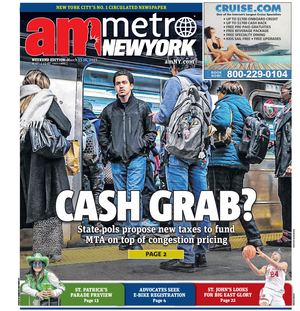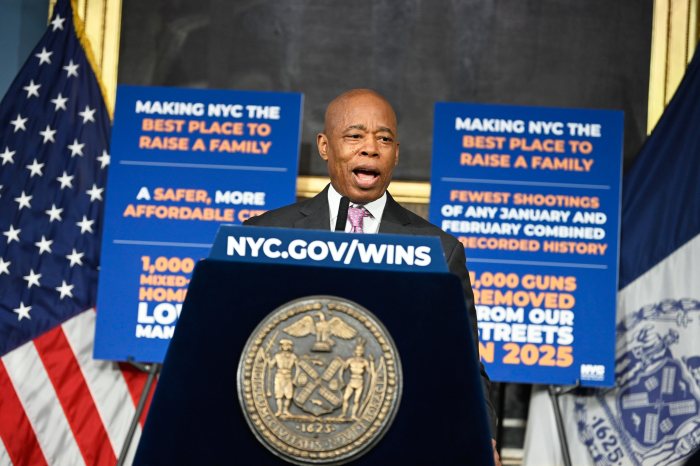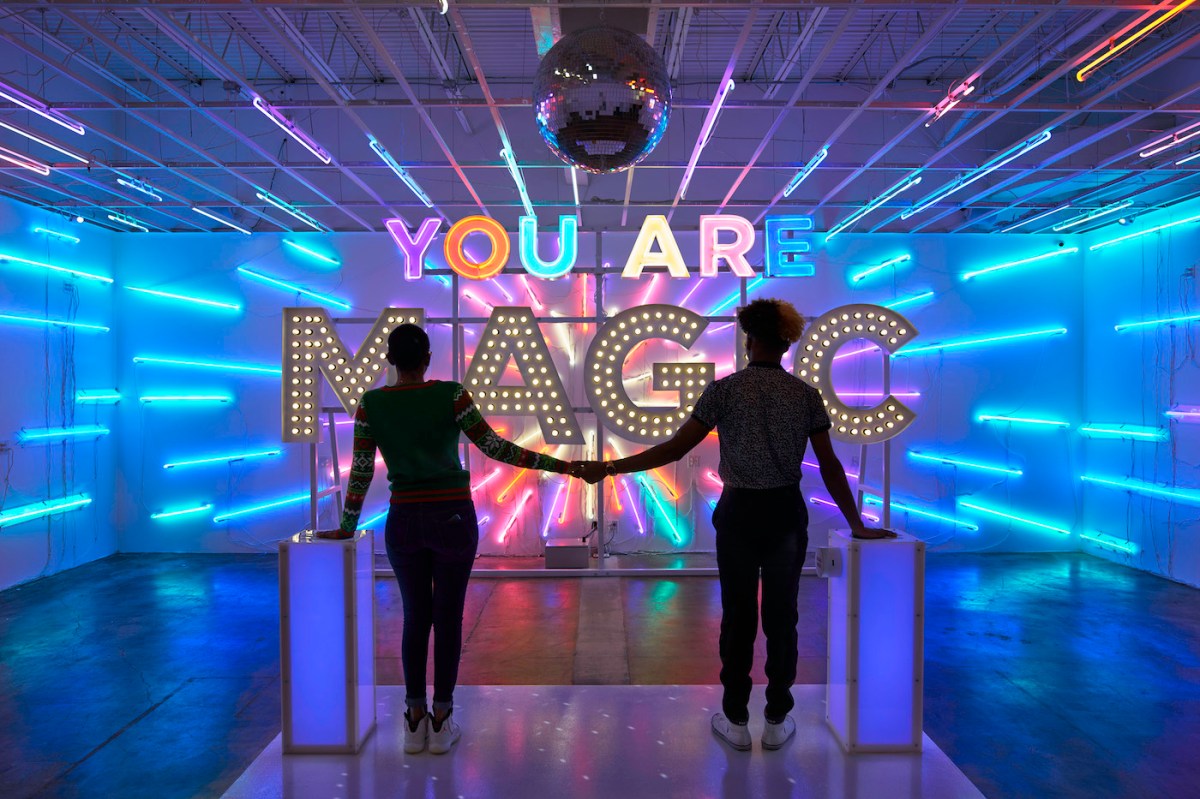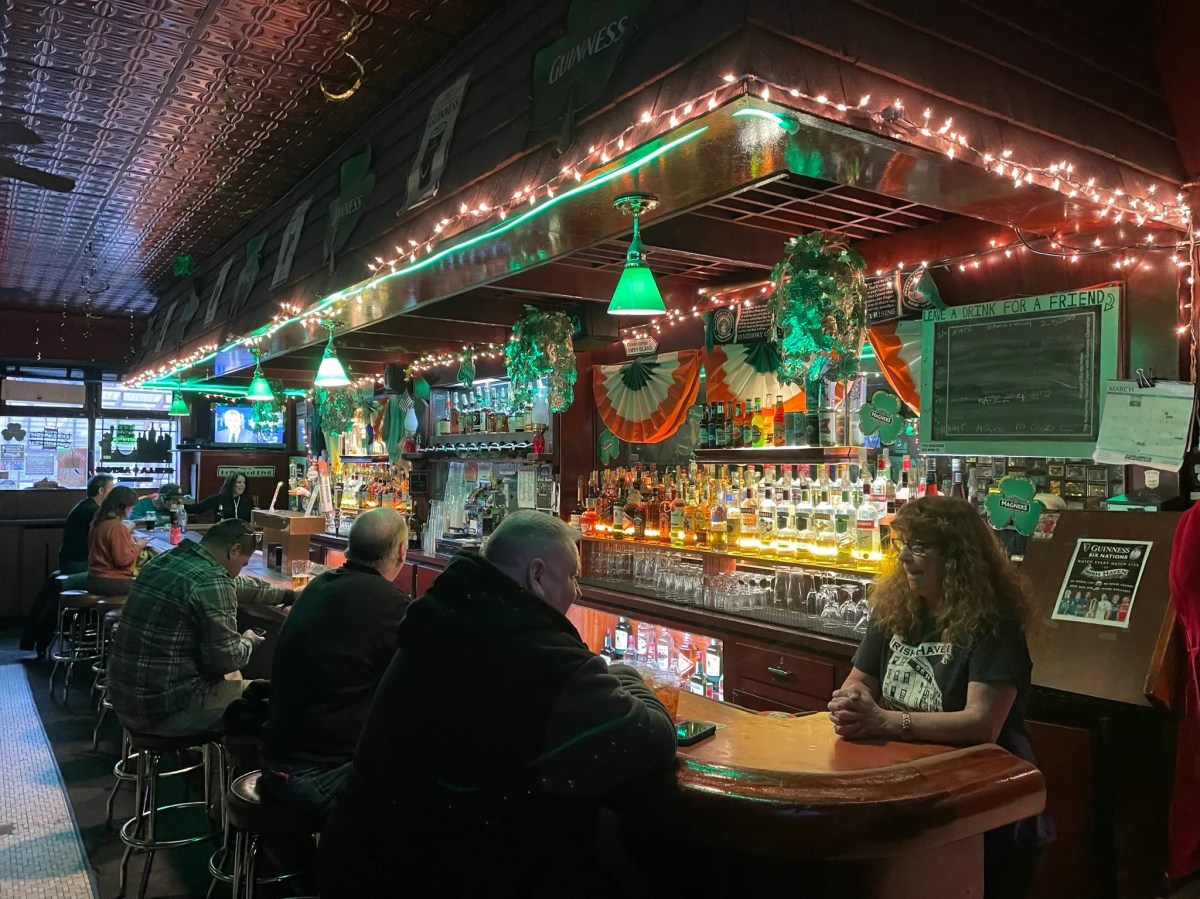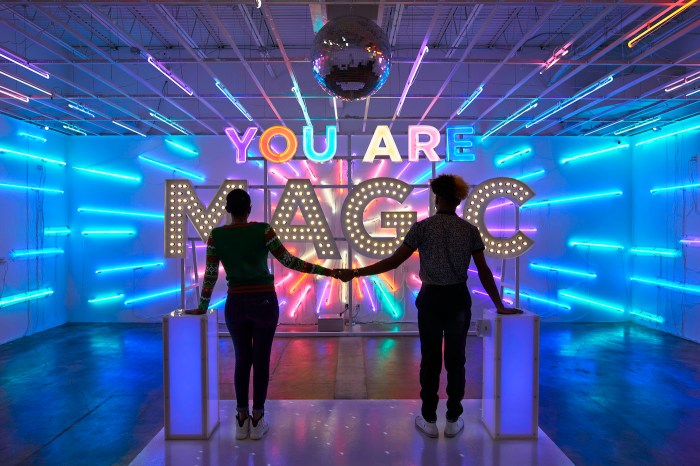
A fleet of autonomous cars hit the pavement in the Brooklyn Navy Yard on Tuesday, marking the first commercial deployment of self-driving cars in the Empire State.
Optimus Ride, a Boston-based tech company, assembled the fleet in hopes of transforming how New Yorkers get around the Yard. The company expects its six vehicles to move almost 20,000 people a month along preset routes as part of a two-year deal with the site. The controlled environment is ideal for the vehicles, whose high-tech laser and camera technology consume gobs of data on every trip.
While the cars do most of the driving themselves, two human safety operators sit at the front of each vehicle, ready to act in case of danger.
John Sgueglia, director of system engineering and testing at Optimus Ride, was hyperfocused Tuesday as a car navigated its way among the towering industrial buildings. Maneuvering around massive trucks and avoiding cyclists while maintaining a fair pace, the car hesitated before left turns and stuttered at stop signs.

“We tend to guard the wheel sometimes, it makes it feel maybe a bit more comfortable,” he said. “Part of my job is to predict the behavior of the car and then sort of make sure it’s reacting correctly.”
The car — which is free to use — quickly tops out at the Navy Yard’s 15 mph speed limit before arriving at the nearby NYC Ferry stop.
Sgueglia said that each short trip can generate around two gigabytes of data, and Optimus plans to use that information to improve the software that runs the vehicles.
Dr. Ryan Chin, the company’s CEO and co-founder, said that will lead to better self-driving cars.
“We basically map the entire environment. We look at every tree, every leaf, every lane marker, every stop sign, every garbage can, everything. We see it all,” he said.

But Chin said the days of truly self-driving vehicles on city streets are at least a decade away. In July, a driverless shuttle operated by another company was reported to have struck a woman in Vienna at a low speed, resulting in vehicles being pulled from the streets.
“There’s no company in the world right now, of any size, whether you’re heavily funded or not, that can drive autonomously from Times Square to Harvard Square in Cambridge without any interventions,” he said.
Those interventions were underway at the ferry stop, where teams of employees took over to make a three-point turn by hand.
Chin noted that his company hasn’t had a safety incident yet, and that they’ve been operating for more than two years on public roads in Boston.
The cars landed at the Navy Yard on the heels of a milestone — the complex recently surpassed 10,000 jobs for the first time since 1966.

David Ehrenberg, who heads the Brooklyn Navy Yard Development Corporation, said that while the yard is still a closed industrial campus, the autonomous cars are part of a new embrace with the city.
“What we’re trying to do is create what we call more moments of porousness, where the general public can come into the Yard and experience it,” he said.
A slew of Navy Yard businesses have added public access through a food hall in Building 77 in recent months, and the yard will soon be host to the first ever Wegmans in New York City.
“There are certainly questions that are raised by autonomous vehicles, on a whole host of public policy issues,” Ehrenberg added, “but we think that we are a great place to learn about the technology and are trying to do that not just with autonomous vehicles but all kinds of other technology."
